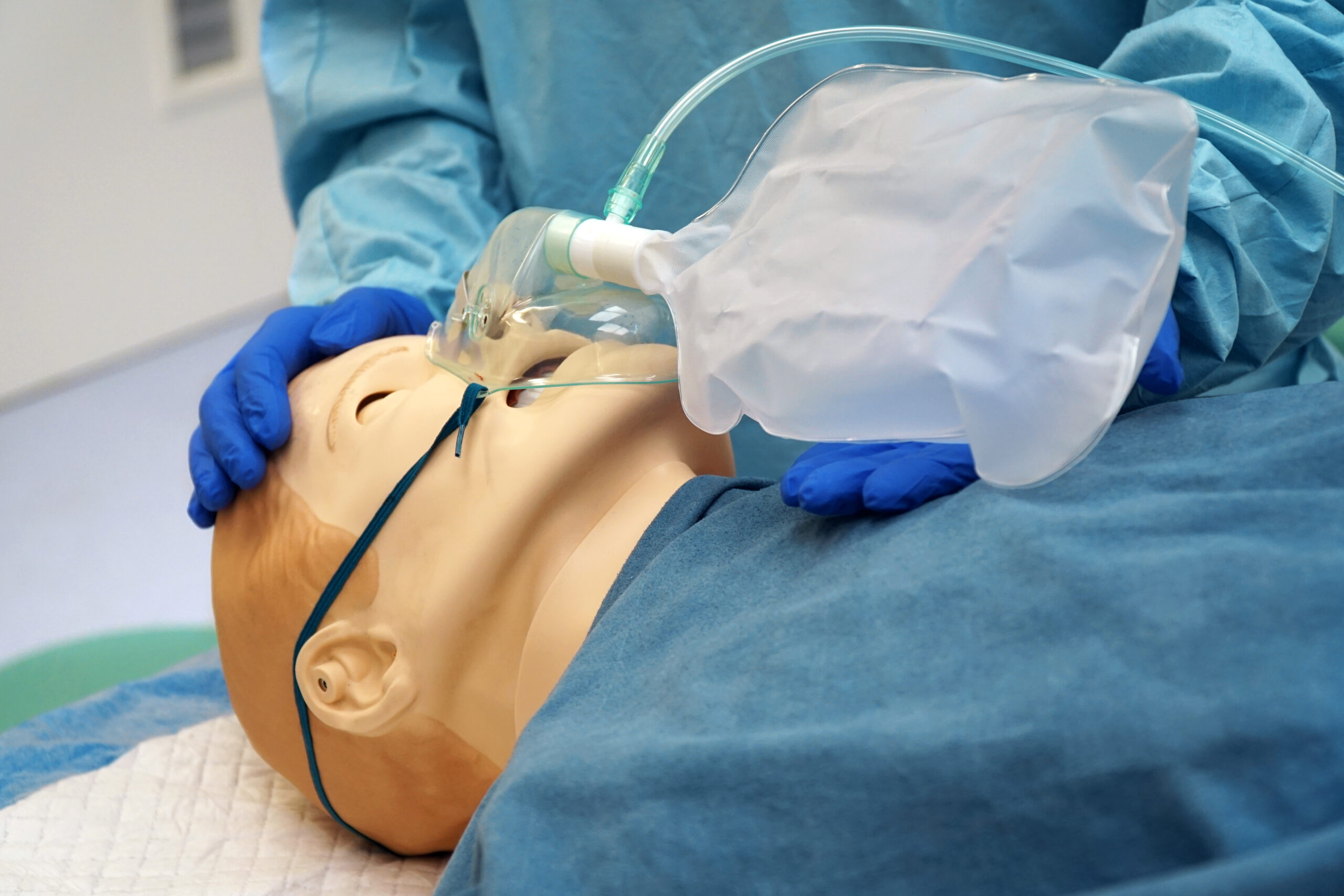The Principles of Shock Management
The Principles of Shock Management
Treatment of shock focuses on oxygen delivery to the tissues. To balance tissue perfusion with the cells’ metabolic demand, the clinician must increase oxygen content in the blood, improve blood volume and cardiac output, decrease oxygen demand, and correct metabolic imbalances.
Techniques for Increasing Oxygen Content of the Blood
Hemoglobin concentration and oxygen saturation determine the blood’s ability to carry oxygen.
Transfusions of packed red blood cells may be necessary if there is inadequate hemoglobin concentration, such as in cases of severe bleeding. To increase oxygen saturation, clinicians can administer high concentrations of oxygen to the patient via a nonrebreather mask.
Mechanical ventilation may be necessary to correct the ventilation-perfusion mismatch in clinical conditions such as pulmonary thromboembolism, tumors, and infections.

Nonrebreather Mask Oxygen Administration
Improving Cardiac Output
Intravenous fluids are the primary tool for improving cardiac output and volume distribution. Vasodilators and vasopressors help maintain cardiac output and volume distribution following IV fluid delivery.
Reduce Oxygen Demand
The PALS provider balances oxygen delivery and oxygen supply by reducing oxygen demand. Pain, anxiety, fever, and increased breathing effort all contribute to increased oxygen demand. The patient may require mechanical ventilation to address respiratory insufficiency.
Key Takeaway
Reduce oxygen demand by controlling:
Pain
Anxiety
Fever
Respiratory distress
The use of antipyretic medication and other external cooling methods can control fever. Sedatives, analgesics, and neuromuscular blockade decrease pain and anxiety. These medications also support endotracheal intubation if required.
However, sedatives and analgesics must be used with caution because they may reduce blood pressure. Sedatives and analgesics are known to impair the body’s response to stress and depress the compensatory mechanisms in shock, such as tachycardia. The clinician must weigh the risks and benefits of using these medicines to treat shock.
Metabolic Imbalances
Shock can cause hypoglycemia, hypocalcemia, hyperkalemia, and lactic acidosis. These metabolic conditions compromise cardiac contractility and further decrease cardiac output.
Hypoglycemia may decrease cardiac and brain function because glucose is necessary to fuel these organs. Hypoglycemia can cause seizures and brain injury. Infants and chronically ill children have depressed glucose stores.
Hypocalcemia is the lack of ionized calcium necessary for cardiac function and smooth muscle vasomotor tone. When a patient receives blood products, colloids, and buffering medications such as sodium bicarbonate, ionized calcium decreases. Ionized calcium increases if there is acidosis and decreases with alkalosis.
Hyperkalemia is an increased potassium concentration. The kidneys normally excrete potassium; hence, hyperkalemia can result from renal dysfunction. Cell death, inadvertent potassium administration, or acidosis also increases potassium concentration in the bloodstream. In acidosis, intracellular potassium shifts to the extracellular and intravascular spaces. Serum potassium concentration falls if the acidosis is corrected or there is serum alkalosis.
Metabolic acidosis is caused by lactic acid production secondary to inadequate tissue perfusion, resulting in anaerobic metabolism. Other medical conditions can cause metabolic acidosis, such as gastrointestinal and renal dysfunction. Diarrhea can result in the loss of bicarbonate ions, which buffer against acidosis. Renal dysfunction can cause retention of organic acid waste and loss of bicarbonate ions, which can also lead to metabolic acidosis.
Bicarbonate therapy is only useful if the metabolic acidosis is due to bicarbonate losses. Fluid resuscitation and the use of vasoactive agents can improve tissue perfusion and regain aerobic metabolism, which will improve metabolic acidosis.
Buffers such as sodium bicarbonate can temporarily correct profound metabolic acidosis early in the disease. Sodium bicarbonate combines with hydrogen ions to produce carbon dioxide and water:
![]()
The body exhales carbon dioxide through increased alveolar ventilation. Thus, critically ill children undergoing treatment with sodium bicarbonate for metabolic acidosis must be supported with ventilation whenever necessary.